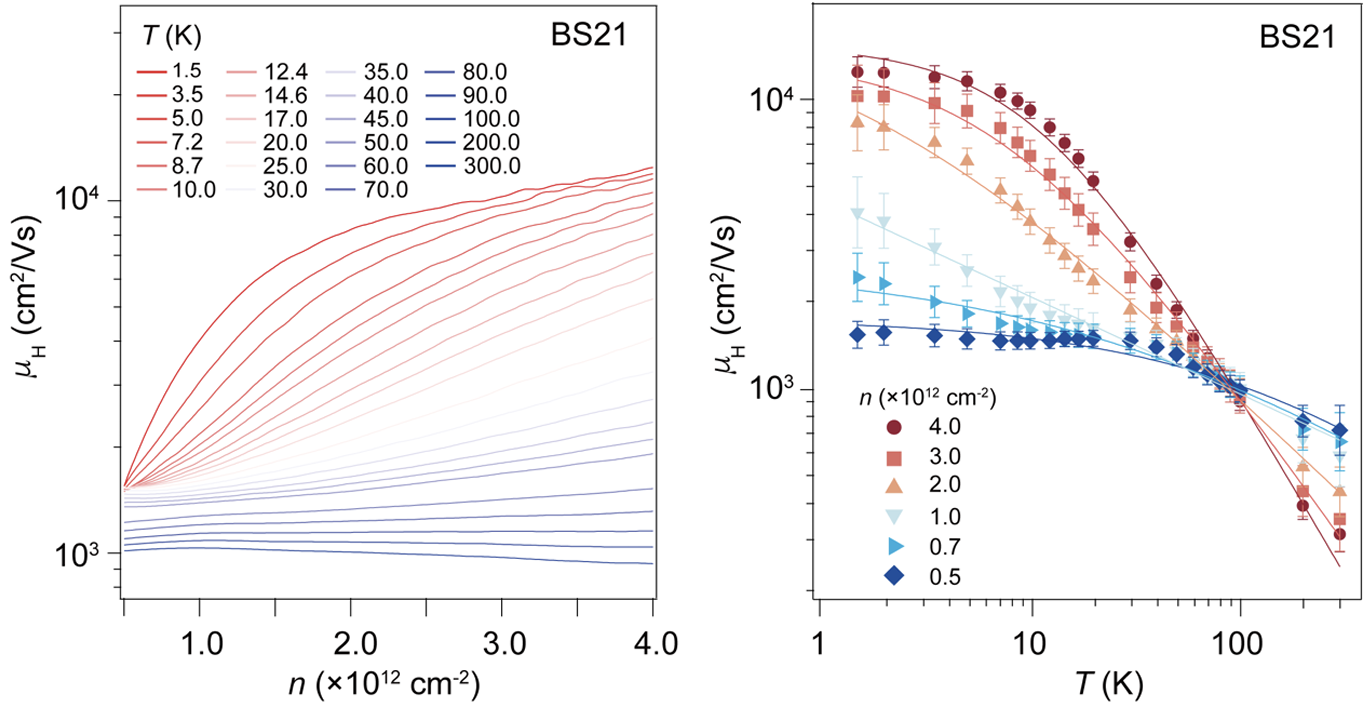
Novel low-dimensional high-mobility semiconductors
source:admin update time:2025-03-26 15:46:49
Exploring methods and material systems for achieving high-mobility 2D semiconductors and observing quantum Hall states and other physical effects in their electronic devices is a key research direction in condensed matter physics and nanoelectronics. For instance, more than 40 years have passed since the discovery of the quantum Hall effect in quantum well two-dimensional electron gases, yet the number of 2D electronic systems capable of realizing quantum Hall states—especially fractional quantum Hall states—remains very limited. In particular, achieving fractional quantum Hall states in high-mobility intrinsic 2D semiconductors via electrical transport is especially challenging, primarily due to the difficulty of obtaining Ohmic contacts at low carrier densities.
Recently, the IQMD research team, led by Research Scientist Dr. Siwen Zhao, has made significant progress in the stable and reliable fabrication of low-temperature Ohmic contacts for n-type molybdenum disulfide (MoS₂) field-effect transistors. Their findings, titled "Fractional quantum Hall phases in high-mobility n-type molybdenum disulfide transistors", were published online in Nature Electronics on October 30, 2024. The researchers encapsulated few-layer MoS₂ crystals with hexagonal boron nitride (hBN), using a pre-patterned, micron-sized 2D window in the top hBN layer to deposit bismuth electrodes via thermal evaporation. The resulting devices exhibited Ohmic contact across the entire temperature range (from millikelvin to room temperature) and ultra-high mobility in their low-temperature ground state, even at low carrier densities. Under millikelvin temperatures and strong magnetic fields, they observed the quantum limit at filling factor ν = 1 and fractional quantum Hall states at ν = 2/5 and 4/5, marking the first realization of fractional quantum Hall effects in an intrinsic bandgap n-type 2D semiconductor via electrical transport (outside of topological flat-band systems). This experimental breakthrough offers a promising pathway for the development of high-mobility low-temperature electronic transistors (HEMTs), low-temperature amplifiers, and other nanoelectronic devices based on 2D semiconductors.


One of the primary research directions of IQMD is the theoretical prediction and experimental exploration of new material systems to realize novel high-mobility 2D semiconductors for future applications under extreme conditions.
Taking ultra-low-temperature high-mobility 2D semiconductors as an example, currently known experimental systems with relatively high mobility at low temperatures include WSe₂ (p-type), MoS₂ (n-type), MoTe₂ (p-type), and Bi₂O₂Se (n-type), among others. Looking ahead, assembling such transistors into large-area logic or amplifier circuits at low temperatures presents both significant challenges and exciting opportunities.



